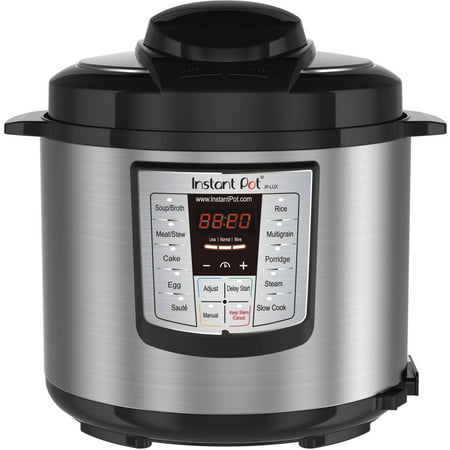If you are going to use the instapot mostly as a pressure cooker you are MUCH better off getting a traditional stove-top pressure cooker. Why? Well, it heats up much faster for one. Another thing is that you can brown your ingredients more easily, because of the higher heat you can generate on a stove top. This is important for some things.
Next, it is much easier to do a "quick release" of the pressure because you can simply put your entire stove-top pressure cooker under some running water and it will come down in temperature in a few seconds.
Finally, most stove-top cookers are bigger.
I use my pressure cooker many times each week and consider it one of the most essential tools in my kitchen. Here is what it does really well.
1. Rice. It produces rice that is better than any rice cooker I've every used. The secret is to put the rice and water in a cooking bowl placed on a trivet, above the water in the bottom of the pressure cooker. The rice steams at 260 degrees (the temperature of steam at 15 psi). This produces quite a different result from steaming at sea level pressure. I use slightly less than the 2:1 water/rice ratio. Bring the pressure cooker up to temperature (it takes less than a minute with only one inch of water in the bottom of the cooker). Once the steam is escaping, cook at 15 psi for six minutes. Turn off the heat and let sit for six more minutes. Then let off the excess steam, fluff the rice, and serve.
2. Mashed potatoes. This took awhile to perfect. Originally I was cooking the potatoes in the pressure cooker water, just like I would if I boiled them. However, the potatoes came out with too much water in them, and when I put the potatoes through my food mill, to mash them, they were gooey. Once again, the solution was to steam them. I cut each potato into really big chunks (about 4-8 chunks for each large potato). I put those in a steamer basket, with about 1/2 inch of water in the bottom of the pressure cooker, and then bring it up to pressure. I then use exactly the same cooking times as for the rice (six minutes under full pressure; then six minutes without heat, but without releasing any pressure). I then put the potatoes through a food mill, stir in some butter and milk to the desired consistency, and serve.
This makes the best mashed potatoes I've ever had.
3. Beans. You will never cook dried beans without a pressure cooker, once you tried it. They cook more completely and in about 1/4 the time.
4. Stews. I have all sorts of recipes for stews, including a wonderful Asian short rib recipe with Hoisin sauce.
5. Soups. I love making soup, and it always turns out better and faster in the pressure cooker. Some of my favorites: lentil soup; black bean soup; and split pea soup. The split pea soup is the only one that may not be better in the pressure cooker because the split peas sometimes break down too far.
I can go on.
If you want to get some of the best pressure cooker recipes, buy what is probably the most famous pressure cooker cookbook. It is from Lorna Sass and is called "Cooking Under Pressure."









